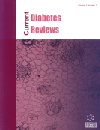-
s History, Prevalence and Assessment of Limited Joint Mobility, from Stiff Hand Syndrome to Diabetic Foot Ulcer Prevention: A Narrative Review of the Literature
- Source: Current Diabetes Reviews, Volume 14, Issue 5, Oct 2018, p. 411 - 426
-
- 01 Oct 2018
Abstract
Background: Limited Joint Mobility (LJM) is a dreaded complication of Diabetes Mellitus (DM). During the last half century, LJM has been studied in patients of different age because it has been considered useful for the monitoring of a patient's condition and for the prevention of vascular disease and diabetic foot. Objectives: The main aims of this review are to describe the relationship between DM and joint mobility as well as its prevalence and assessment. We have also investigated the role of LJM in the development of diabetic foot ulcers. Methodology: An in-depth literature search was conducted to identify studies that examined the prevalence and characteristics of LJM in patients with DM of different types, age, durations and chronic complications. Results: Many factors (therapy improvements, population characteristics and different evaluation methods) concur to hinder an exact assessment of the prevalence of LJM. However, it has been confirmed that LJM is widespread among patients with DM and may affect more than two-thirds of them in addition to being a major risk factor for foot ulcer. Its role in the monitoring of a patient's condition is also important for the definition of risk thresholds such as in patients with diabetic foot. The efficacy of exercise therapy for the treatment of LJM, also in patients at risk of foot ulcer, has not been discussed. Conclusion: Difficulties encountered in the definition of the prevalence of LJM may hinder its study and the establishment of preventive interventions. However, LJM plays a key role in the monitoring of patients, especially those at risk for ulcer.


